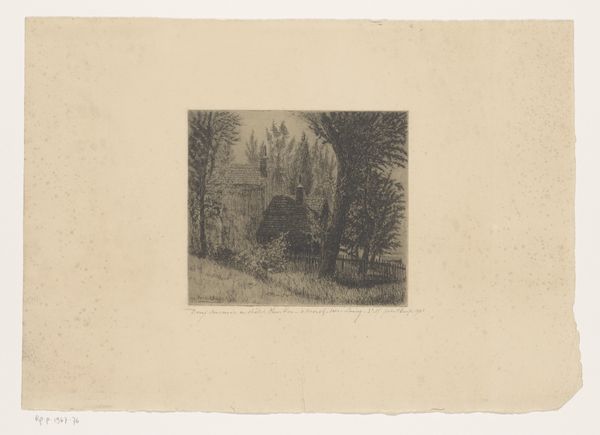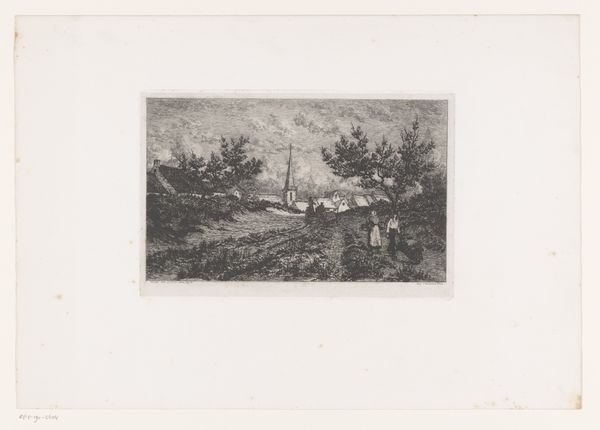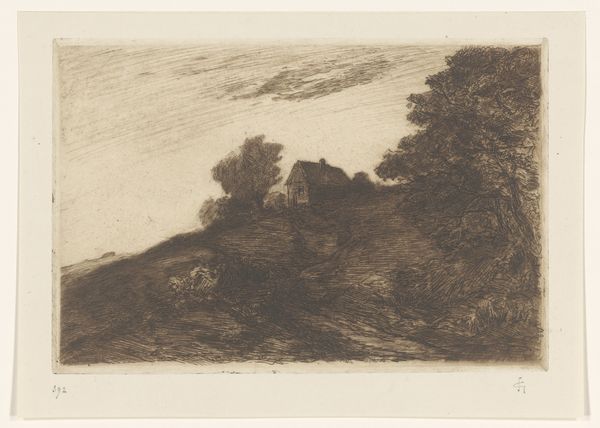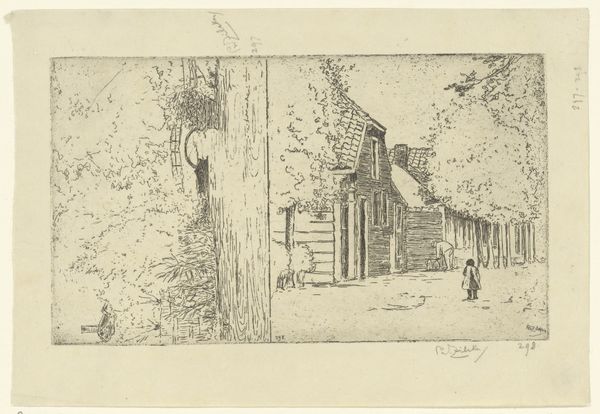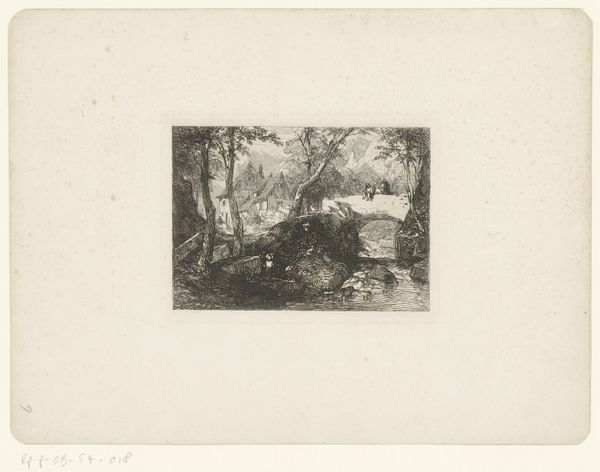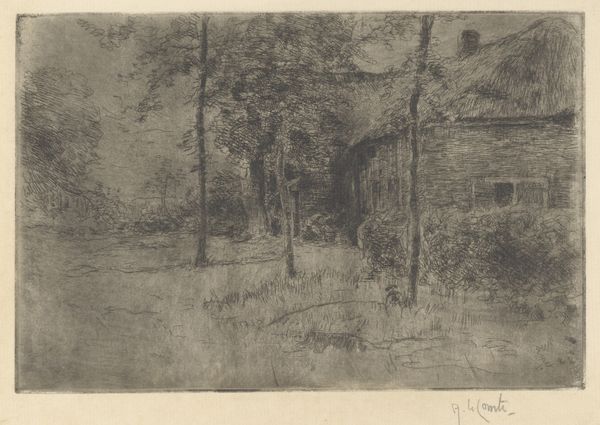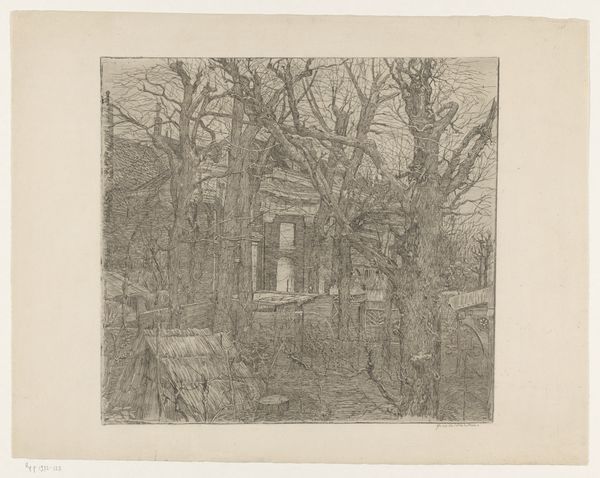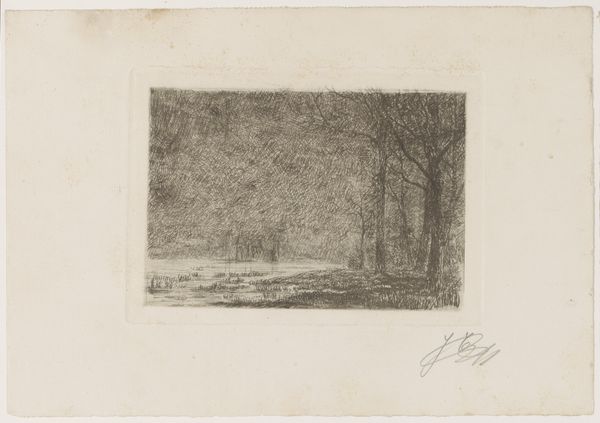
print, etching, paper
# print
#
impressionism
#
etching
#
landscape
#
paper
Dimensions: height 84 mm, width 134 mm
Copyright: Rijks Museum: Open Domain
Curator: Welcome. We’re looking at "Boerderij," a print created by Philip Zilcken between 1867 and 1890, currently residing in the Rijksmuseum collection. Editor: My first impression is of something hidden, almost secretive. The etching is so dark, the building practically disappears into the landscape. There is an incredible sense of texture though, isn't there? Curator: It certainly emphasizes texture. Zilcken utilizes the etching technique to portray the rustic character of the scene, playing with light and shadow. Remember, impressionism was making waves during this period, which elevated scenes from everyday life. The social shift towards appreciating the beauty of the ordinary might explain why this piece seems valuable to us today. Editor: Absolutely. And thinking about the materials— the copperplate, the acid, the paper— the entire process becomes visible in the final image. Each etched line speaks of a deliberate act of labor, immortalizing the hand that crafted it and the specific context of its creation. There is an inherent politics involved, the simple value of labor and how it interacts with art. Curator: Indeed, the etching process, though seemingly straightforward, carries its own set of artistic decisions and traditions. Etchings, being more accessible to a wider audience than original paintings, fulfilled a democratizing role in the art world. Consider, how a work like this could be consumed by and inform a broader populace. Editor: I keep circling back to the materiality. There's this tension between the dense blacks and the almost painfully bright highlights on the wall of the farm structure. It brings such palpable weight and reality to a traditionally flat process, as well as highlighting the amount of technical skill on display here. Curator: Zilcken uses this darkness strategically to evoke a feeling of enclosure, almost a retreat from the rapidly industrializing world. The scene feels intentionally framed as untouched by the modern transformations of society. That rural imagery and focus shifts art into a realm that resists these changes. Editor: The social and material contexts really deepen our engagement. It goes beyond just looking, and brings forward a unique understanding of the labor behind both rural living and the art of creating the etching itself. Curator: Precisely. Analyzing through the lens of production, and historical setting has brought a new appreciation for its significance. Editor: It’s compelling how such a seemingly simple image reveals layers of history, materiality, and artistic intent.
Comments
No comments
Be the first to comment and join the conversation on the ultimate creative platform.
